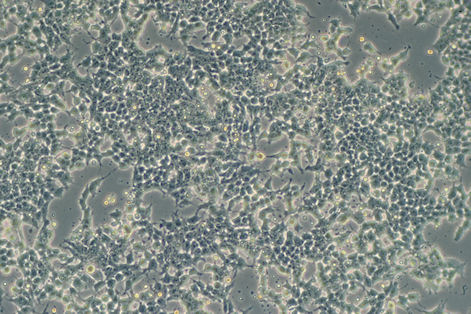| ID |
TKG 0519 |
| Cell name |
F9 |
| Data accepted |
|
| Animal |
129 mouse |
| Scientific name |
Mus musculus |
| Sex |
|
| Case history |
|
| Tissue |
Embryonal carcinoma |
| Genetics |
|
| Life span |
Infinite |
| Morphology |
Polymorphic |
| Medium |
D-MEM + 15% FBS or RPMI-1640 + 10% FBS |
| Passage method |
0.02% EDTA-PBS or 0.05% trypsin, RT |
| Characteristics |
This cell line was established from testicular teratocarcinoma of a strain
129 mouse. This shows limited differenciation under normal culture conditions,
can be induced to differenciate into partial endoderm in the presence of
retinoic acid and dibutyric cyclic AMP. The newphenotype is characterized
by synthesis of plasminogen activator, laminin and type IV collagen and
by low levels of alkali phosphatase and lactate dehydrogenase. The cell
type generated by this induction is not dependent upon the continuous presence
of either compounds, but the cAMP agents are active only F9 cells the have
been treated with retinoic acid. (The F9 cells are routinely propagated
on culture surfaces that have been treated with 0.1% gelatin). A culture
submitted to the Cell Resource Center for Biomedical Research was found
to be contaminated with mycoplasma. Progeny were cured by Treatments with
BM Cyclin and MC210. |
| CO2 concentration |
5% |
| Subculture frequency |
1:40~1:80, twice a week. |
| Classification |
|
| Mycoplasma |
PCR: -, Hoechst DNA staining: - |
| Isozyme analysis |
LD |
| Established by |
Bernstine et al. |
| References |
ProNas.,70, 3899-3903,
1973.PMID: 4521215 Cell,
15, 393-403, 1978.PMID: 214238 Cell,
21, 347-355, 1980.PMID: 6250719 |
| References by users |
|
| Comments |
|
| Deposited by |
|
| Restriction |
|
| Photo |
 |


